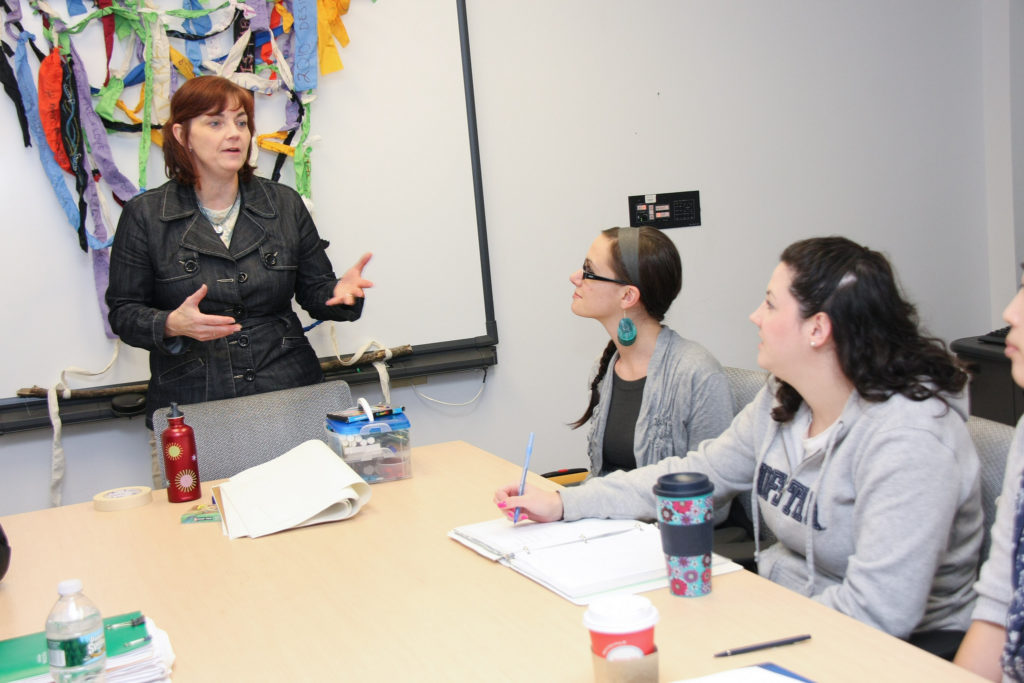A new study, published in the International Journal of Mental Health Promotion, examines the benefit of art courses on mental well-being and social inclusion. The results of the service evaluation study, conducted in Open Arts Essex programs in the UK, suggest introductory art courses can benefit individuals with mental health difficulties. The researchers, led by Ceri Wilson, Faculty of Health, Social Care and Education at Anglia Ruskin University in the UK, write:
“The results of this six-month follow-up study of participatory arts courses add further weight to the growing evidence that arts participation is an effective means of promoting mental well-being and social inclusion for people experiencing or at risk of mental health problems.”

Art therapy has been shown to provide mental health benefits for a variety of individuals and conditions. The authors discuss previous research showing “involvement in community arts activities may help to resolve people’s need for individual and social identity and that this, in turn, may assist people to find a sense of social and thus personal belonging.”
Open Arts Essex was established in 2008 “with the aim of promoting mental well-being and social inclusion for people experiencing or at risk of mental health problems in South Essex, England.” A core component of the program is a 12-week introductory art course, open to users of mental health services, self-referred individuals, and carers. Initial evaluations of the art courses at Open Arts Essex suggest the experience improves well-being and social inclusion, two domains that are prioritized in England’s mental health policy.
Given the demonstrated short-term benefits of Open Arts Essex, the researchers sought to provide the first long-term evaluation of the art courses. Ten arts courses (visual arts, drama, and percussion) were evaluated. Course participants were invited to answer questionnaires at the beginning and end of the course, as well as follow-up assessments 3- and 6-months after the course ended. The researchers collected data from 106 participants at the beginning of the art courses, although fewer participants completed the end of the course and follow-up questionnaires (e.g., 39 people responded to the 6-month follow-up). The majority of participants were White, female, and middle-aged.
The researchers state, “all respondents reported enjoying their course and over 90% reported increased motivation to do art work and other activities. Over 80% also reported improved confidence, feeling more positive about things and improved relationships as a result of participation.”
For both well-being and social inclusion, participants had significantly higher scores at the end of the art courses compared to the beginning. These gains remained high at the 3-month follow-up. Improvements in well-being and social inclusion were reduced at the 6-month follow-up, but scores at 6-months were still significantly greater than initial scores.
The majority of the participants who responded to the 3- and 6-month follow-ups continued making art. Some participants also reported taking up additional activities (e.g., volunteering) as a result of participating in the art classes. The researchers suggest this is evidence supporting the positive benefits of art for mental well-being and social inclusion.
The authors note the limitation that they were unable to include a control group and therefore cannot be sure the improvements are not due to other factors. In addition, the study may be subject to response bias: The smaller number of participants who responded to the follow-ups may differ from participants who chose not to respond.
The authors address the lack of funding for long-term studies evaluating the efficacy of art programs for mental wellness. They call for more resources to be allocated to more rigorous study designs (e.g., randomized controlled trials) in order to better assess how art programs can improve the lives of individuals experiencing mental health difficulties.
****
Wilson, C., Secker, J., Kent, L., & Keay, J. (2017). Promoting mental wellbeing and social inclusion through art: Six month follow-up results from Open Arts Essex. International Journal of Mental Health Promotion. Advance online publication. doi:10.1080/14623730.2017.1345688 (LINK)















I run an art (STEAM based) program for inner city, at-risk children currently, and have run art programs for many years in schools. Absolutely art boosts confidence, increases social inclusion, teaches new skills, helps build confidence, helps develop the creative side of the brain, and brings great joy to those who participate in it. I know because the “art moms” are among the most beloved within the schools, the children make this quite obvious. How odd the efficacy of something which is obviously beneficial must be tested, it’s as if the “mental health professionals” are incapable of utilizing common sense, although that was my experience with them.
I will add art programs can also point out when “people experiencing or at risk of mental health problems” are on drugs with major and moderate drug interactions. Chaos on the paper = chaos in the brain = bad drug cocktails, time after time after time.
The doctors need to start checking for moderate and major drug interactions, better yet, they should stop drugging our children based upon scientifically invalid disorders. I mean, really, what kind of person thinks forcing a substance chemically identical to cocaine upon massive numbers of children is wise, only very sick psychopaths would think that’s wise.
You might want to do a little research into which globalist banksters have funded and directed the education of those within today’s US “mental health industry,” and what their actual motives are. Hint, they’re the same globalist banksters that funded the education of the Nazi psychiatrists and the communist Russian psychiatrists.
Report comment
As a patient/inmate I had to do “Art therapy/occupational therapy” while poisoned ( can’t see, can’t talk, little hand control), or you don’t get our of prison/hospital. So I got no love for Art.
Report comment
But I suspect that what you were forced to participate in was not truly an art therapy program. Coloring in coloring books and stringing beads together is not art therapy but this is what you find most of the time in psych prisons.
I was lucky enough to be able to participate in a true art program that never referred to itself as therapy when I was held in the state hospital. It was art for art’s sake and the people leading it were true artists who were willing to teach and train people how to go about using their innate talents, which most didn’t even realize that they had, into creating really interesting and beautiful pieces of true art. They even held a yearly art show where peoples’ art was auctioned off to the highest bidders. The “patients” received all the money from the sales of their art. It was truly a fantastic program that really benefited people. It was not coloring in coloring books with crappy crayons.
Report comment
My daughter is very creative but seven years of being sedated/disocciated on powerful anti-antipsychotics has robbed her of the cognitive skills to do creative writing and many of the so-called arts The system needs very talented are therapists who are willing to work with the most psychologically damaged individuals. The art program at our community mental health agency is embarrassing. I think they asked staff at a staff meeting, “Do any of you do arts and crafts?” Whoever raised their hand was henceforth in charge of the shiny “art program” at our agency. Meanwhile, the authentic art therapists train to teach those populations most likely to receive funding outside the system (V.A. cancer survivors, geriatric, etc) I can guarantee our insurance will t cover this
Report comment
Madmom
I was lucky enough to actually have access to a real art program while I was held in the state “hospital”. They are far and few between but there are a few of them out there. Unfortunately, most of what passes for art programs are like the one you describe. It’s pitiful and disgusting to say the least and is demeaning to the people who are coerced into participating in them.
I hope that one day your daughter will be able to access that part of her inner self where her artistic talents lie waiting to once again be released. All of us, no matter how much we’ve been assaulted by the system’s “treatment” have an inner core of health and well being that can never be touched or destroyed by psychiatry. It just takes a lot of time and work for some people to find their way to that core so that they can make use of what they find there. I think of your daughter often and of you and your family that have sustained and supported her for so long. Your daughter and you all are amazing.
Report comment